Connections for positive impact are at the heart of Big Path Capital and part of the motivation for the firm’s membership in the 1% for the Planet global community. Through 1% for the Planet, Big Path Capital and other businesses and individuals support environmental nonprofits financially and organizationally.
Founded in 2002, 1% for the Planet has a straightforward and impactful giving model: Companies donate 1% of annual sales to help protect the environment that provides for them. The idea came to life thanks to Yvon Chouinard of Patagonia and Craig Mathews of Blue Ribbon Flies, business leaders seeking to protect the Earth for future generations.
Now, 1% for the Planet has more than 5,400 business members — including Big Path Capital — who collectively have donated more than $530 million to environmental organizations around the world. Through its membership, Big Path Capital supports the Planet Impact Fund and the Southern Environmental Law Center. In the Q&A that follows, Big Path Capital Founder and CEO Michael Welchel shares more about the firm’s experience and impact as a 1% for the Planet member.
When and why did Big Path Capital decide to join 1% for the Planet?
Michael Welchel: We joined 1% for the Planet in 2017. Big Path seeks to partner with groups where there are cascading circles of success. 1% totally fits that category for us. Their mission aligns with our internal mission and also aligns with our clients. Being part of a network with this type of affinity is both inspiring and catalytic.
Why did Big Path select to support the Planet Impact Fund and the Southern Environmental Law Center?
MW: As we see it, the Planet Impact Fund is playing offense leveraging the playbook of a different kind of capitalism, using the engine of capitalism to help drive change. A hybrid model blending philanthropic and investment strategies can bring catalytic and long-term change.
For SEL, this was playing defense by protecting what is so special — our natural environment — against the wrong kind of capitalism. I grew up in the South and live in an area that is essential to this region’s ecosystem. The biodiversity we see today is the result of 4.5 billion years of evolution. It is our responsibility to maintain these ecosystems not only because they support our lives and livelihoods but also to show gratitude for the gifts that these natural assets bestow on us.
How does the work of these organizations align with Big Path’s mission and intended impact?
MW: When we started Big Path Capital 16 years ago, any discussion of doing good in deploying capital was seen as philanthropy or charity. Most investors believed you made money in one pocket and did good by giving it away from the other pocket. But due to the collective efforts of groups like 1% for the Planet, today, this new path — conducting business for profit and impact — is the largest opportunity and one of the best tools to address the world’s most pressing problems. We can BOTH make money AND realize positive impact. Planet Impact Fund is based on this premise.
We also recognize that we still represent only a drop in the ocean. As we push for a new type of capitalism to be adopted, we also need to protect the incumbent form of capitalism from liquidating our natural capital.
At Big Path, we’ve launched two initiatives to amplify our impact. Ripples of Impact honors staff anniversaries with a donation to the charity of their choice in the amount of $1,000 for each year of service. It celebrates our employees’ dedication to building a sustainable economy while supporting exceptional nonprofits.
Ripples of Impact complements our Impact Days program, which provides employees two paid days per year for volunteer work. In the past people have volunteered for beach cleanups, at soup kitchens, taking refugee families to medical appointments, cutting paths for trails for the park system, working with Make a Wish Foundation, and so much more.
How does 1% for the Planet’s collaborative impact complement Big Path Capital’s B Corp Certification?
MW: Creating the change we need in the world requires leveraging all our available tools: financial donations to worthwhile causes, moving capital to companies and funders that are committed to positive impact, getting involved, sharing best practices with our companies, and learning from others as well. 1% for the Planet’s model — to leverage businesses to support nonprofits doing the work that is needed with their team’s time and their corporate dollars — is a great example of the kind of collaboration and multi-prong approach we feel is needed. The 1% for the Planet approach is simple yet powerful. Plus, we gain points during our B Corp recertification for our commitment to donating a percentage of our revenue. The two models intersect and support each other in that way.
Why would you encourage other companies to join 1% for the Planet?
MW: Three aspects of 1% for the Planet membership stand out to me.
- Clarity and Creativity: 1% percent of a company’s revenue is a clear and easy-to-calculate goal that every employee can understand and get behind. The better we do as a company, the more we are committed to giving, and that can really inspire people to find creative ways to grow our business and fulfill our 1% promise.
- Accountability: Just like B Corp Certification, being a 1% for the Planet member means we are making a public commitment and are willing to verify that we have followed through. With so much mission-washing taking place, it is important to show we do what we say to the wider impact community, our clients, and our team.
- Ease: The joining and certifying process with 1% for the Planet is very simple and quick.
As a member of 1% for the Planet and other initiatives, Big Path Capital collaborates with nonprofit and for-profit partners to create a more equitable and sustainable economy that benefits everyone. Get updates on what we’re doing through our newsletter.


